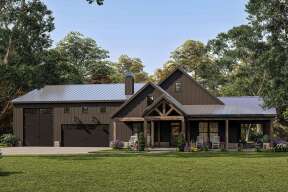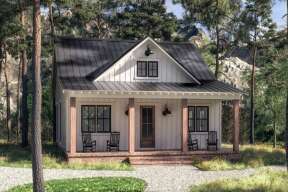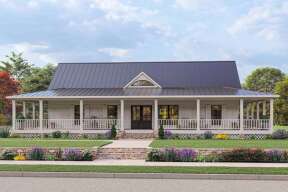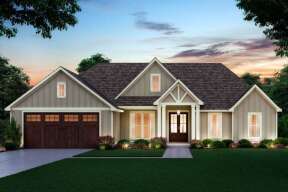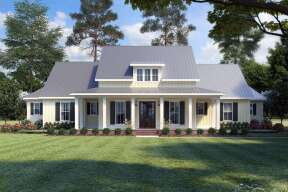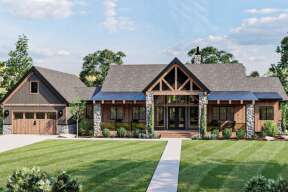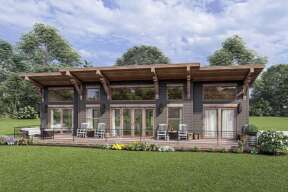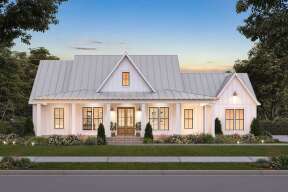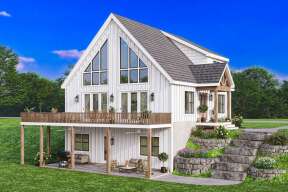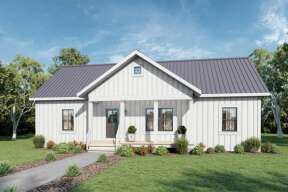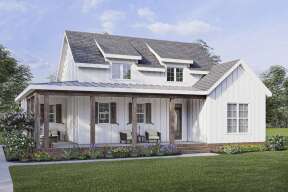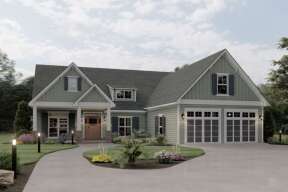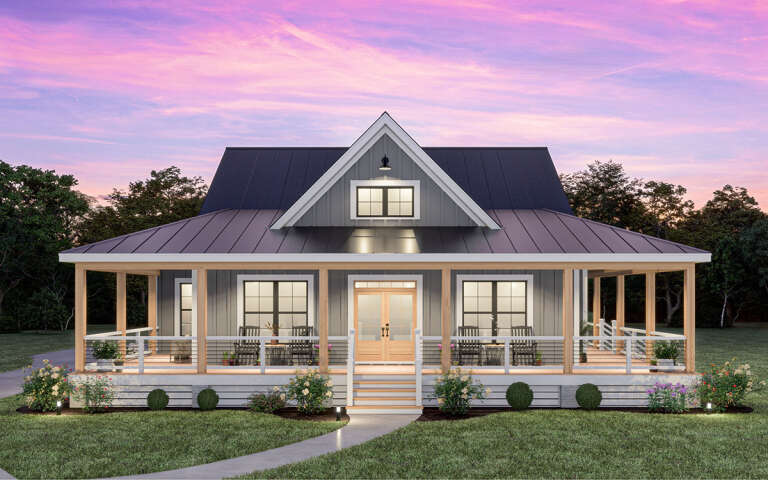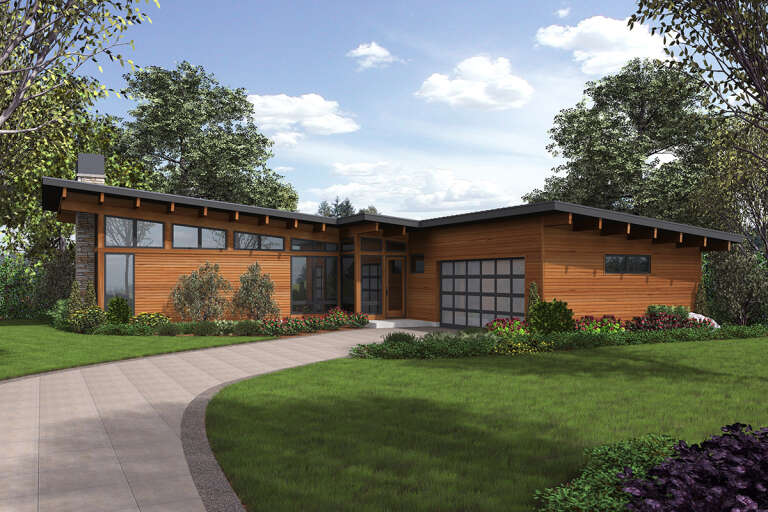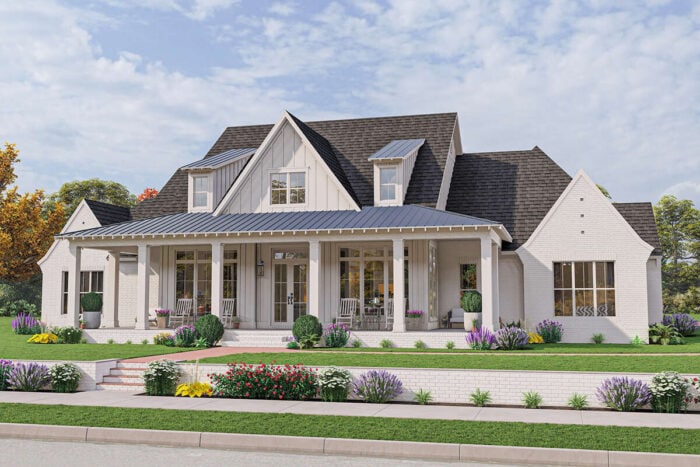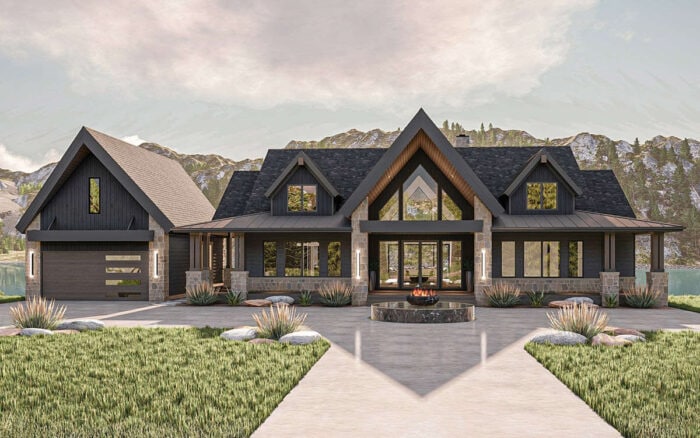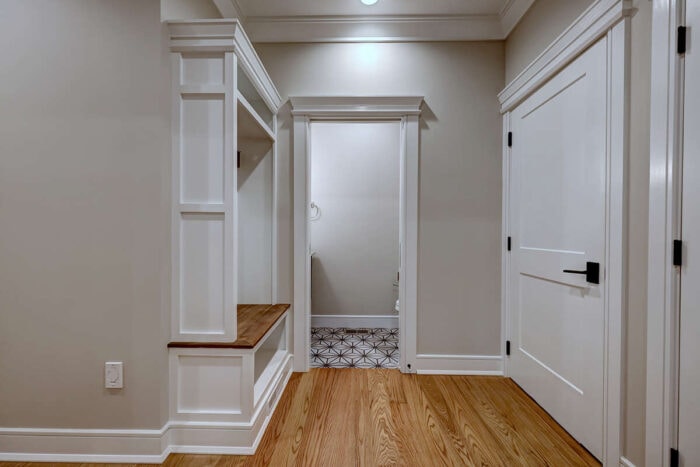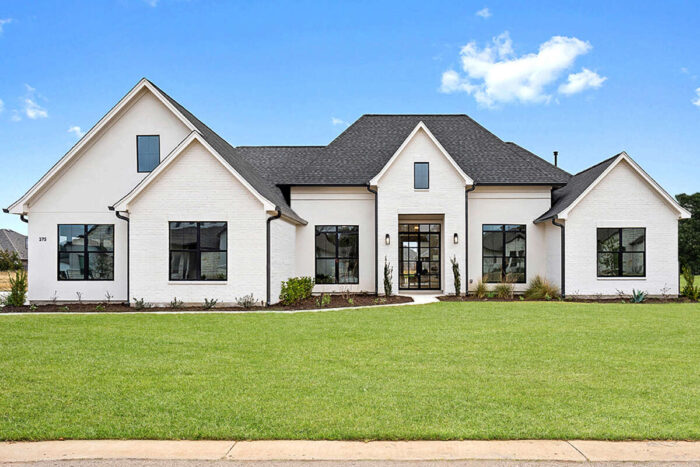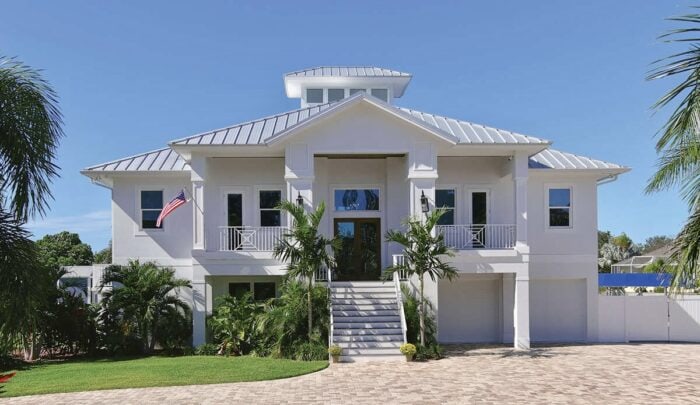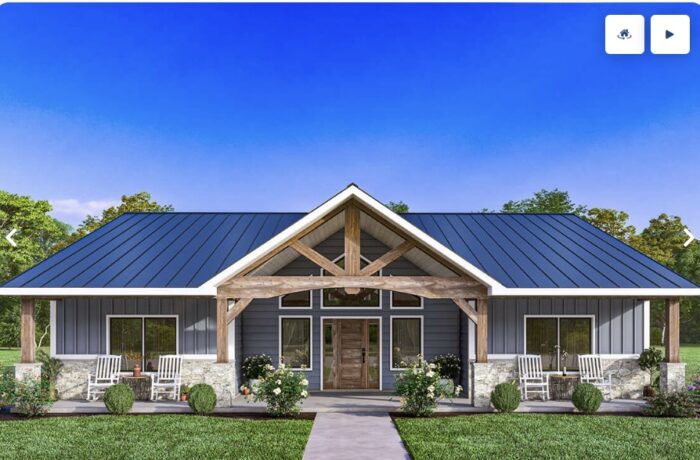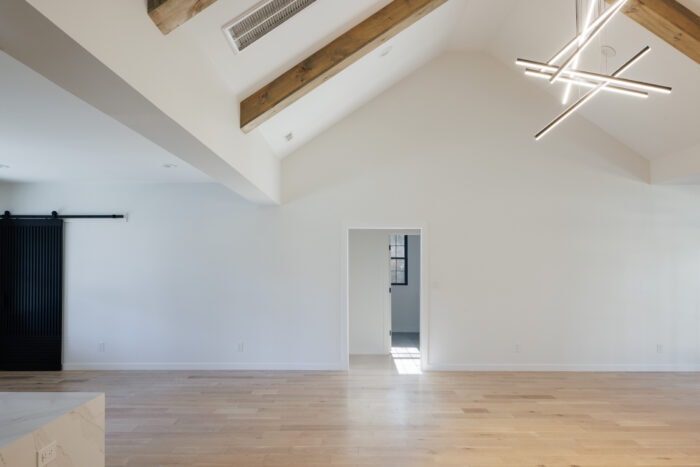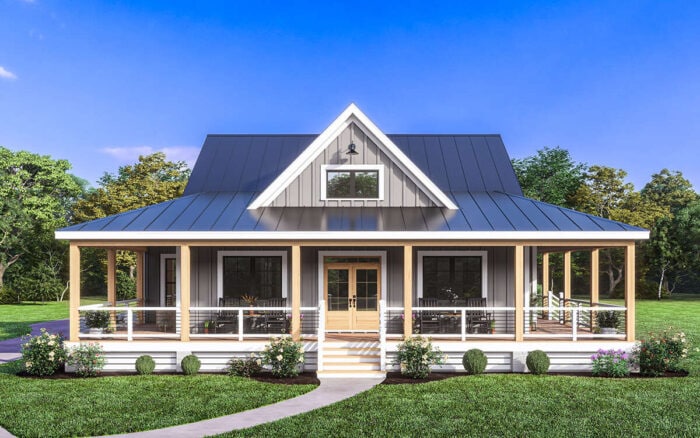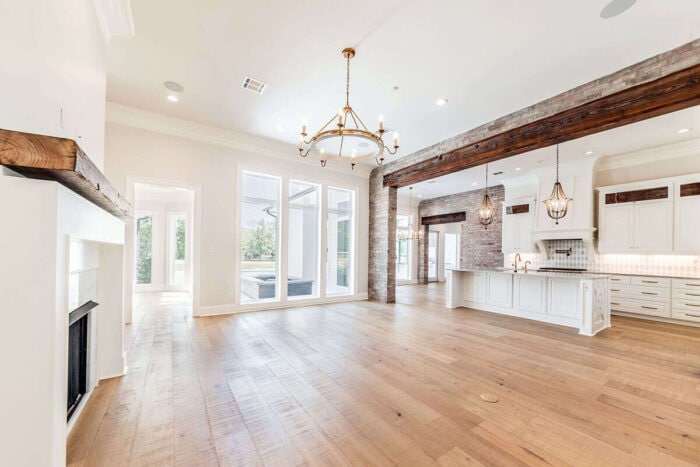- Shop
- Styles
- Collections
- Garage Plans
- Services
-
Services
- Cost To Build
- Modifications
- PRO Services
- Contact Us
- Learn
-
Collections
- New Plans
- Open Floor Plans
- Best Selling
- Exclusive Designs
- Basement
- In-Law Suites
- Accessory Dwelling Units
- Plans With Videos
- Plans With Photos
- Plans With 360 Virtual Tours
- Plans With Interior Images
- One Story House Plans
- Two Story House Plans
- See More Collections
-
Plans By Square Foot
- 1000 Sq. Ft. and under
- 1001-1500 Sq. Ft.
- 1501-2000 Sq. Ft.
- 2001-2500 Sq. Ft.
- 2501-3000 Sq. Ft.
- 3001-3500 Sq. Ft.
- 3501-4000 Sq. Ft.
- 4001-5000 Sq. Ft.
- 5001 Sq. Ft. and up
-
Recreation Plans
- Pool Houses
- Sheds
- Gazebos
- Workshops
-
Services
- Cost To Build
- Modifications
- PRO Services
- Contact Us
New American Floor Plans Combine Innovation and Comfort
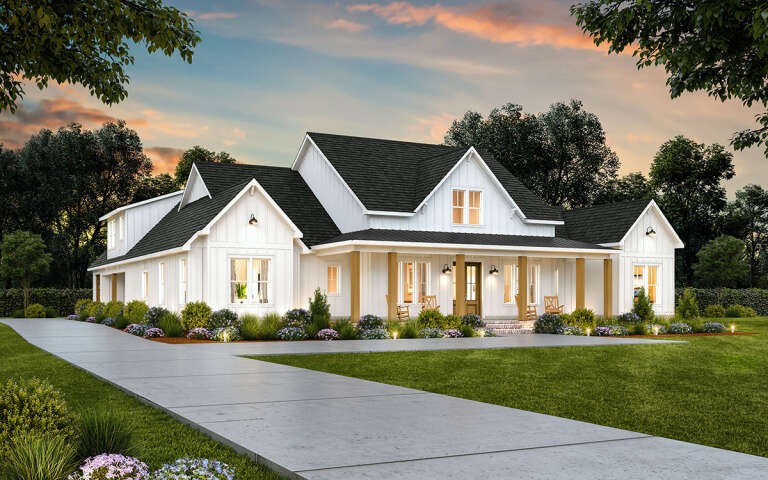
The architectural evolution of American floor plans is one of the multiple cultural shifts, societal transformations, and technological innovations. Each style of home narrates a chapter of the nation’s vast and vibrant history, shaped by the aspirations and realities of its people.
From the rudimentary dwellings of early colonial settlers to the striking contemporary homes gracing modern cityscapes, the tapestry of American floor plans is as diverse as its populace. Each era of American-style architecture introduced a distinct style, mirroring societal shifts and advancing technology.
A History of American Floor Plans
Before looking at new American floor plans, it’s essential to look back at the classic American home floor plans that influenced today’s homes. A journey into America’s architectural timeline reveals a diverse representation of styles, ideals, and innovations, echoing the nation’s progress through time.
Colonial Roots: The First American Homes
Colonial House Plans, with their straightforward designs, were more than mere structures; they encapsulated the resilient spirit of early settlers. These buildings were tailored to withstand America’s varied climates, and their designs often hinged on communal values and resource availability.
Colonial homes were (and still are) characterized by their symmetrical, square, or rectangular shape; brick or wood facades; grand entrances with pillars and columns; and prominently placed chimneys.
The Victorian Era: Ornamentation, Elegance, and Industrial Revolution
As America ushered in a period of prosperity, the Victorian era became synonymous with grandeur. Victorian house plans showcased ornate designs, intricate detailing, and a palpable sense of pride, representing newfound affluence.
While most people may not look at Victorian homes and equate them to the modern American floor plans we see today, the fact is that much of the technology needed to build homes efficiently was developed during and used on Victorian homes. Some of those advances, to name a few, included:
- Steam-powered machinery
- Mass production and prefabrication
- Improved transportation infrastructure
- Advanced window technology
- Plumbing and gas lighting innovations
The 20th Century: Modernism and Beyond
The 20th century saw a significant architectural shift. As cities expanded and families evolved, the design landscape pivoted from the luxury of Victorian homes towards minimalism, efficient use of space, and integration of new materials. This was the birth of modern architecture, most perfectly expressed in Mid-Century Modern house plans designed by Frank Lloyd Wright and Richard Neutra.
The transition from the ornate, detailed Victorian homes to the clean, streamlined designs of 20th-century Modernism is a tale of societal, technological, and artistic transformation. Though it may seem abrupt on the surface, this shift was the result of a series of interconnected developments that involved societal transformation, changing aesthetics, more technological innovations, the rise of functionalism, and economic factors.
Key Features of American House Plans
Delving beyond facades and structures reveals signature features that give American homes their distinctive character. While the architectural styles in American house plans are wildly diverse, there are some features you’ll find regularly.
The Iconic Front Porch
More than a mere architectural feature, the front porch has sociological implications. It’s a testament to community bonding, leisurely evenings, and the familial interactions that are core to American living. Its presence in modern American homes, even in an age dominated by high-rises and minimalist designs, speaks volumes about its enduring charm and significance. Why is it such a key feature in American home floor plans?
- A nod to tradition. Front porches trace their origins back to early American homes, where they served as vital outdoor living spaces. They provided respite from indoor chores, a shaded area during hot summers, and a space to interact with neighbors. Incorporating porches in modern homes tap into this nostalgia, offering a tangible link to a cherished past.
- Social connections. In an age marked by digital interactions, a porch serves as a bridge to real-world connections. It’s a space where residents can engage with neighbors, fostering a sense of community and belonging. A well-designed front porch subtly signals openness and approachability, creating an inviting ambiance that encourages spontaneous visits and interactions.
- Architectural aesthetics. Porches can be tailored to fit various architectural styles, from Craftsman to Colonial, offering designers a versatile tool to enhance a home’s curb appeal. In architectural terms, a porch can provide a balanced look to a facade, breaking the monotony and adding depth and dimension to the structure.
- Added value. A well-constructed porch can augment the value of a property. It not only adds to the living space but also enhances the aesthetic appeal of a home, making it more attractive to potential buyers.
Gabled Roofs and Their Significance
Characterized by its triangular shape formed by two sloping sides, the gabled roof is not merely an aesthetic choice; it is interwoven with practicality, cultural evolution, and an echo of historical precedents.
- Versatility across architectural styles. From the quaint Cape Cod houses to the expansive Craftsman bungalows, the gabled roof has been a constant, adapting to various architectural movements and techniques throughout American history.
- Weather resistance. One of the primary reasons for the enduring popularity of gabled roofs in America is their capability to handle diverse weather conditions. The steep pitch effectively sheds rain and snow, preventing water accumulation and related damage and making it a solid choice for nearly any climate.
- Ventilation and loft space. The gabled roof design allows for better ventilation, ensuring homes remain cool during summers and well-insulated during winters. Additionally, the area beneath the peak can be utilized for attics or loft spaces, optimizing the use of vertical space in a home.
- Distinctive silhouette. Gabled roofs impart a classic and instantly recognizable profile to homes. Whether viewed against a backdrop of urban hustle or rural tranquility, they add a touch of architectural elegance.
The Rise of the Open Floor Plan
Transitioning from compartmentalized rooms, new American floor plans embrace open layouts. The open floor plan, a dominant contemporary American home design trend, represents more than just an architectural choice—it encapsulates evolving lifestyles, technological advancements, and cultural shifts. There’s not one reason why most plans have shifted to this open design, but rather, several that all worked in harmony.
- Societal and lifestyle evolution. In today’s fast-paced world, quality family time is a cherished commodity. Open floor plans encourage interaction among family members, enabling conversations to flow easily between the kitchen, dining, and living areas. Additionally, as the lines between work, leisure, and dining become increasingly blurred, homes must offer flexible spaces that can adapt to diverse needs, making open floor plans an attractive option.
- Aesthetic and spatial appeal. By eliminating unnecessary walls and barriers, open floor plans create a perception of a larger, more expansive area—a boon for homes with limited square footage. Without walls obstructing windows or interior spaces, natural light can flow freely, illuminating the entire room and reducing the need for artificial lighting during the day.
- Adaptability and futureproofing. Families grow, shrink, and change over time. An open floor plan offers the adaptability to reconfigure spaces as required, whether it’s accommodating a new member or repurposing a space for remote work. On top of that, recognizing the demand among homebuyers, many realtors affirm that homes with open floor plans often fetch higher market values, making them a wise investment for the future.
Regional Variations of American House Plans
From coast to coast, architectural nuances echo the local climate, culture, and history of each American region. Exploring the variety of American house plans lets you see how diverse the genre truly is.
New England Colonial vs. Southern Colonial
The New England colonies, predominantly settled by English Puritans, built their homes as robust, utilitarian shelters, emphasizing family-centric and communal spaces. Constructed mainly from timber, a resource abundant in the region, these homes typically rose to two stories, crowned with steep gabled roofs designed to adeptly shed the region’s heavy snowfalls. Notably, large porches were a rarity; instead, homes might have a modest overhang or stoop. These homes, in their simplicity and functionality, mirrored the Puritan values of humility and community.
Contrastingly, the Southern colonies, with their sprawling plantations and agrarian-driven economies, erected homes that exuded grandeur, reflecting the region’s social stratifications and its warmer climes. These edifices, often stretching out to one or one-and-a-half stories with broad facades, frequently employed brick in their construction, capitalizing on the region’s rich clay deposits. However, the pièce de résistance of the Southern colonial home was its expansive porch, often encircling the home, providing both a respite from the heat and a venue for social gatherings.
In essence, while both architectural styles are rooted in America’s colonial narrative, they tell distinct stories. Through their design elements and spatial arrangements, they offer invaluable insights into the lives and ethos of America’s pioneering settlers.
Ranch Style Homes in the West
Ranch house plans, characterized by their single-story, sprawling layouts, found a natural home in the vast, open landscapes of the Western US. Emerging in the 1920s and gaining peak popularity in the mid-20th century, these homes mirrored the West’s spirit of freedom and spaciousness.
Their horizontal lines and integration with the surrounding terrain resonated with the region’s topography, from vast plains to desert vistas. Additionally, the ranch’s open-concept interiors and emphasis on indoor-outdoor living aligned seamlessly with the West’s temperate climate and sociocultural appreciation for casual, expansive living.
Over time, the ranch-style home evolved from a functional architectural choice to a symbol of Western American identity and lifestyle.
The Brownstones of the Northeast
Brownstones, synonymous with the architectural fabric of the Northeast, owe their iconic status to a blend of geology and urban evolution. The Northeast was rich in the reddish-brown sandstone from which these structures got their name, making it an accessible and aesthetic building choice in the 19th century.
As cities like New York and Boston witnessed rapid urban expansion, there emerged a need for upscale yet compact residential spaces. Brownstones, with their stately facades and multi-story designs, seamlessly filled this niche.
Their prevalence was further propelled by the middle class’s ascent, seeking residences that reflected their burgeoning status. Over time, these sandstone marvels became not just homes but emblematic of the Northeast’s urban charm and historical tapestry.
The Bungalows of California
Bungalows, with their cozy ambiance and efficient layouts, found a perfect match in California’s balmy climate and laid-back ethos. Initially inspired by the single-story homes of South Asia, Bungalow house plans were introduced to America in the late 19th and early 20th centuries.
Their rise to prominence in California was facilitated by the state’s rapid growth during this period, driven by both the allure of Hollywood and the expanding opportunities in the West. The bungalow’s simple design, favoring horizontal lines and deep integration with surrounding nature, was harmoniously in sync with California’s landscape.
Its open floor plans, sprawling porches, and emphasis on indoor-outdoor living resonated with Californians’ penchant for a relaxed, sun-soaked lifestyle. As a result, bungalows swiftly became the architectural embodiment of the California dream, representing both its leisurely pace and its embrace of nature.
FAQs About American Floor Plans
It’s apparent that American home floor plans have a wide variety, but if you still have some questions about the architectural “style,” here are some of the most frequently asked questions about American-style architecture.
What is American-style architecture?
American-style architecture is a dynamic blend of influences, reflecting the nation’s diverse history and evolving ethos. Rooted in Colonial designs brought over by European settlers, it rapidly adapted and transformed, absorbing Indigenous, Spanish, and later, global inspirations.
From the stately Georgian and Federal homes of the East to the adobe structures of the Southwest and the modern skyscrapers dotting city skylines, American architecture is a testament to innovation and adaptability.
Each style, be it the charming Cape Cod houses or the iconic Ranch homes of the West, tells a story of a time, place, and the people of its era. United in its diversity, American architecture paints a rich mosaic of the nation’s journey and aspirations.
How has American architecture changed over the decades?
American architecture, ever-evolving, mirrors the nation’s journey from its founding to the present day. From the Colonial styles influenced by European settlers to the ornate flourishes of Victorian homes, the landscape began to shift.
The 20th century heralded the rise of skyscrapers, symbols of American ambition and progress. Mid-century Modern designs emphasized simplicity and communion with nature. However, as we neared the millennium, postmodernism blended historical motifs with modern aesthetics.
Today, with a heightened ecological consciousness, sustainable design principles dominate, showcasing America’s adaptability and forward-thinking approach in its architectural narrative.
What is the most common house style in America?
The Ranch-style home holds the title as one of the most predominant house styles in America. Born in the 1920s and reaching its zenith of popularity in the mid-20th century, the Ranch reflects America’s post-war aspirations of simplicity, functionality, and a suburban dream.
Characterized by its single-story design, open floor plans, and a strong emphasis on horizontal lines, the Ranch home represents a fusion of modernist ideas with America’s Western spirit. Its widespread adoption across suburban neighborhoods makes it an iconic and enduring emblem of American residential architecture.
How does American architecture differ from European styles?
American architecture, while initially influenced by European styles, has carved its unique path, reflecting the nation’s vast landscapes and diverse cultural tapestry. While European designs are deeply rooted in centuries-old traditions, from the Gothic cathedrals to the Renaissance palazzos, American architecture encapsulates a more eclectic and adaptive spirit. It harmoniously blends Colonial, Indigenous, and global inspirations.
American floor plans, from their budding colonial roots to the open concepts of today, form a dynamic tapestry entwined with technological advancements, societal shifts, and evolving aesthetics. Each architectural era not only mirrors the prevailing societal values and technological advances but also anticipates future needs and preferences.
Whether it’s the iconic front porch symbolizing community bonding or the adoption of the open floor plan adapting to changing lifestyles, these designs offer more than mere functionality. They reflect the American spirit – ever-evolving, innovative, and always seeking comfort. While the diversity in styles across regions paints a vivid picture of the nation’s vast landscapes and histories, it also unites them under a common narrative of innovation, adaptability, and an aspiration for better living.
American architecture stands as a testament to a nation’s relentless journey toward progress, seamlessly marrying the comforts of tradition with the allure of innovation.

Brandon Hall
Our "go to guy" and company expert, Brandon is the visionary and dreamer of all we do here at America's Best House Plans. He manages quality assurance, audits existing processes for maximum effectiveness, and develops strategies to increase productivity and efficiency. With over 15 years experience in the home design industry, Brandon has a hand in every aspect of the day-to-day operations of our company, in addition to ensuring an unparalleled level of service to our customers.
Related Articles
April 4, 2024
/Brandon Hall
How to Choose a House Plan
The options are nearly endless. Stock house plans are filled with possibilities, individua …

March 29, 2024
/Brandon C Hall
Featured Style: Mountain and Mountain Rustic House Plans
Whether you’re searching for the perfect house plan to utilize as a vacation property or for a pri …

March 21, 2024
/Brandon C Hall
Why Choose a House Plan with a Mudroom?
Sometimes, it really is the little things that make a house a home. When choosing the right house pl …

March 12, 2024
/Brandon Hall
Featured House Plan Style: Modern
Are you looking to build a beautiful home with an open, minimalist bent on design? What are your val …

March 3, 2024
/Brandon C Hall
Find Your Perfect Vacation House Plan
Have you set your sights on having a vacation home in the near future? Owning a simple, peaceful vac …

February 25, 2024
/Brandon C Hall
House Plans with Videos
You requested, and we listened! We understand that it can be difficult to visualize how a finished h …

February 18, 2024
/Brandon C Hall
Types of Flooring: Choosing the Best Option for Your Home
Your choice of flooring sets the foundation for the overall ambiance and functionality of your livin …

February 9, 2024
/Brandon C Hall
How to Calculate Roof Pitch
Whether you’re a seasoned DIY enthusiast or a first-time homeowner with a curious mind, unders …

February 3, 2024
/Brandon C Hall
Why the Open Concept Kitchen Is So Popular
The convenience and comfort of an open-concept kitchen are heavily sought after in the modern house …

HOUSE PLANS
SERVICES
Enter your email to receive exclusive content straight to your inbox



